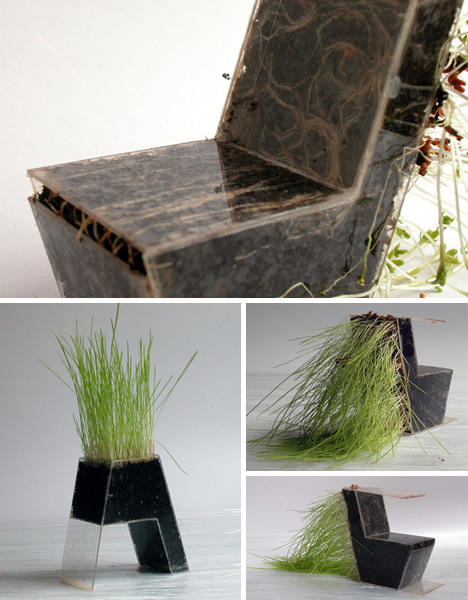DIY Plant Furniture: Green-Growing Organic Home Objects

Bamboo has been known to grow at rates up to 24 inches in a single day – just imagine if we could harness that growth to build cheap, easy and durable objects for our own without the material, transportation and design costs of a normal furniture piece. Like a plant-world version of Frankstein’s monster experiments, this is experimental science on a fantastic fringe.
Kai Linke has taken grasses, bulbs, bamboo and other quick-growing plants, fashioned molds for their branches and root systems to populate and pushed their limits through a series of deformations. This may seem far fetched to those with a more ordinary green thumb, but consider how artificial the environments are in which most plants grow – it is not really such a stretch from genetic engineering, farm plotting and other common agricultural practices of both large and small scales.
The results vary, but the overall effect is impressive: most of these forced-growth situations result in densely-packed plant systems that bend, wrap and twist into every nook and cranny of the desired table, stool or chair shape desired. The objects are fluid, messy and unpredictable, yet their uniqueness speaks volumes about the intersection of human influence and natural processes.
Whether these will hold their form once the mold is removed or revert to their natural form, this concept is well worth exploring. With the focus on self-replicating machines and nanotechnology advancements one has to wonder if we are missing an obvious source of inspiration: Mother Nature herself and the incredible speed, strength and flexibility with which much of the world’s plant life can grow.




